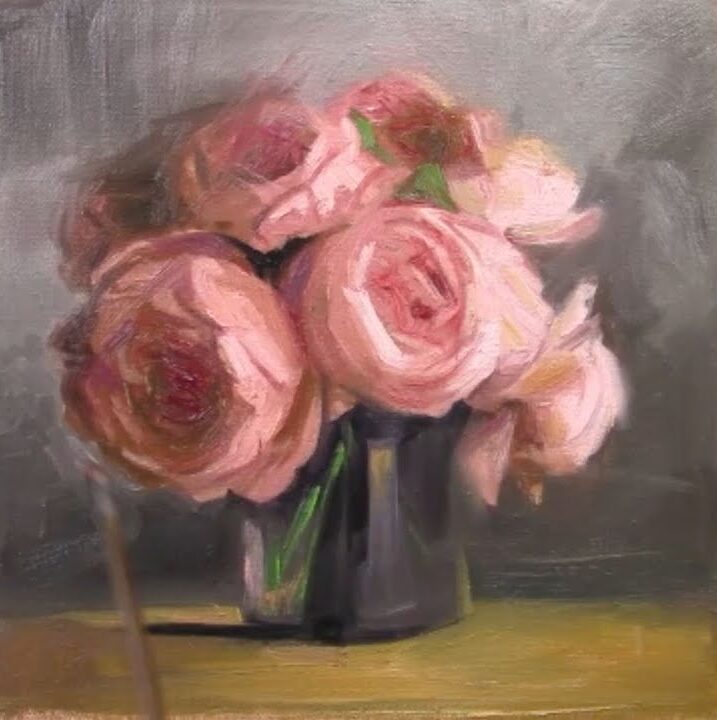Starting your painting journey can feel overwhelming, especially if you’re not sure what to paint. The good news is, there are plenty of easy and fun subjects that are perfect for beginners. Whether you’re working with acrylics, watercolors, or oils, these simple ideas will help you build confidence and develop your skills. Let’s explore some easy things to paint that will inspire your inner artist!
1. Simple Landscapes
Landscapes are a great starting point because they don’t require perfect details. You can create beautiful scenes with just a few basic shapes and colors.
Ideas to Try:
- A sunset with a glowing orange sun and a few clouds.
- A mountain range with a blue sky and green hills.
- A beach scene with a horizon line, ocean, and sand.
Tip: Use broad brushstrokes for the sky and water, and add small details like trees or waves with a finer brush.
2. Trees and Leaves
Trees and leaves are forgiving subjects because they don’t need to look perfect. You can experiment with different shapes, colors, and textures.
Ideas to Try:
- A single tree with a detailed trunk and leafy branches.
- A silhouette of a tree against a colorful sunset.
- A close-up of leaves with varying shades of green.
Tip: Use a dry brush technique to create texture for the bark or leaves.
3. Flowers
Flowers are a classic subject for beginners because they come in all shapes, sizes, and colors. You can keep it simple or add more details as you gain confidence.
Ideas to Try:
- A single rose or tulip with a few petals.
- A field of sunflowers or daisies.
- A vase with a bouquet of colorful flowers.
Tip: Start with the basic shape of the flower and add details like petals and stems later.
4. Abstract Art
Abstract painting is all about freedom and creativity. There are no rules, so you can let your imagination run wild.
Ideas to Try:
- Bold geometric shapes in contrasting colors.
- Swirls and splashes of paint for a dynamic effect.
- A gradient background with simple shapes or lines on top.
Tip: Use a palette knife for bold, textured strokes or a sponge for softer blends.
5. Sky and Clouds
Painting the sky is a relaxing and rewarding exercise. You can experiment with different colors and techniques to create stunning effects.
Ideas to Try:
- A bright blue sky with fluffy white clouds.
- A dramatic sunset with shades of orange, pink, and purple.
- A starry night sky with a crescent moon.
Tip: Blend colors gently for a smooth gradient effect in the sky.
6. Fruit
Fruit is a simple and colorful subject that’s perfect for practicing shapes and shading.
Ideas to Try:
- A bowl of apples or oranges.
- A single slice of watermelon.
- A bunch of grapes with highlights and shadows.
Tip: Use a light source to practice shading and create a 3D effect.
7. Animals
Animals can be as simple or detailed as you like. Start with basic shapes and add details like fur or feathers.
Ideas to Try:
- A silhouette of a cat or dog.
- A colorful bird like a parrot or flamingo.
- A simple fish with scales and fins.
Tip: Use reference photos to help you capture the basic shapes and proportions.
8. Houses and Buildings
Painting houses or buildings is a great way to practice perspective and symmetry.
Ideas to Try:
- A cozy cottage with a chimney and windows.
- A city skyline with simple rectangular buildings.
- A barn with a red roof and a fence.
Tip: Use a ruler or straight edge to keep your lines clean and precise.
9. Silhouettes
Silhouettes are easy to paint because they focus on shapes rather than details. They’re perfect for creating dramatic and striking artwork.
Ideas to Try:
- A tree silhouette against a colorful sunset.
- A person walking on a beach at sunset.
- A city skyline at night with a full moon.
Tip: Use a dark color like black or navy blue for the silhouette and a bright background for contrast.
10. Seasonal Themes
Painting seasonal themes is a fun way to celebrate the time of year and experiment with different colors.
Ideas to Try:
- A snowman or winter landscape for winter.
- A blooming tree or garden for spring.
- A sunny beach scene for summer.
- A pumpkin or autumn leaves for fall.
Tip: Use seasonal colors like pastels for spring, bright yellows for summer, and warm oranges for fall.
Bonus Tips for Beginners
- Start Small: Use a small canvas or paper to avoid feeling overwhelmed.
- Keep It Simple: Focus on basic shapes and colors before adding details.
- Practice Regularly: Even 15 minutes a day can help you improve.
- Don’t Fear Mistakes: Every mistake is a learning opportunity.
Conclusion
Painting doesn’t have to be complicated, especially when you’re just starting out. By choosing simple subjects like landscapes, flowers, or abstract designs, you can build your skills and confidence while having fun. Remember, the goal is to enjoy the process and express yourself—so grab your brushes, pick an idea, and start painting!
Happy creating! 🎨

